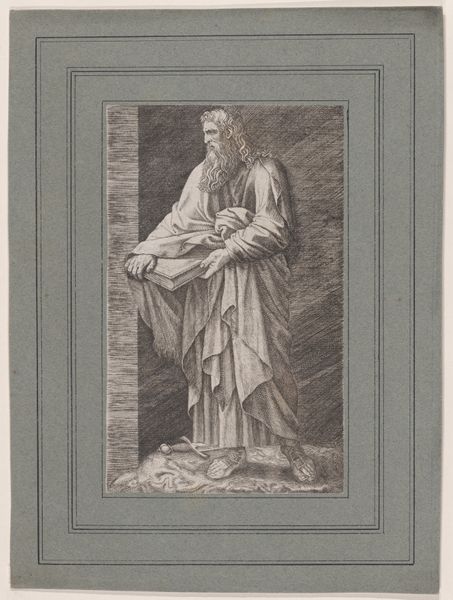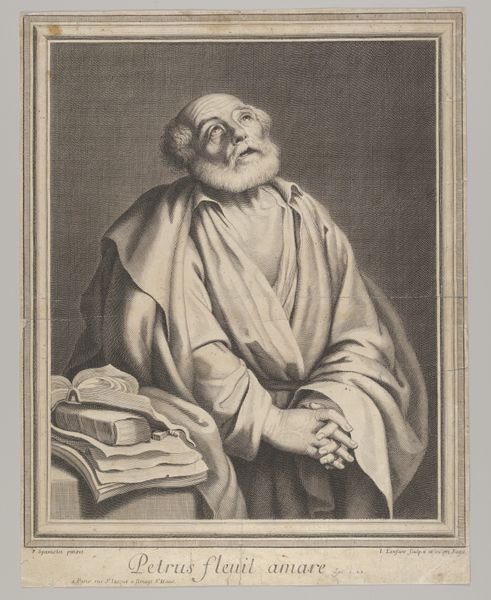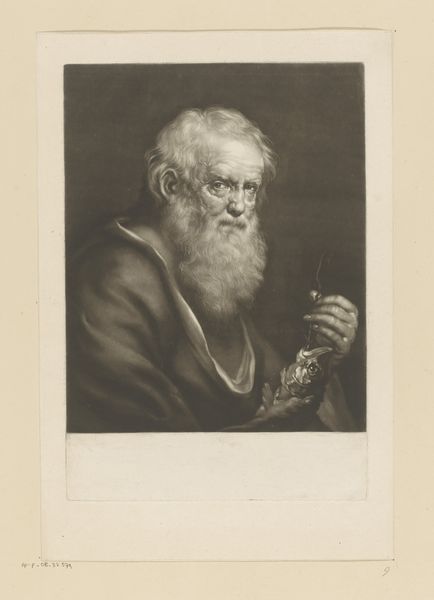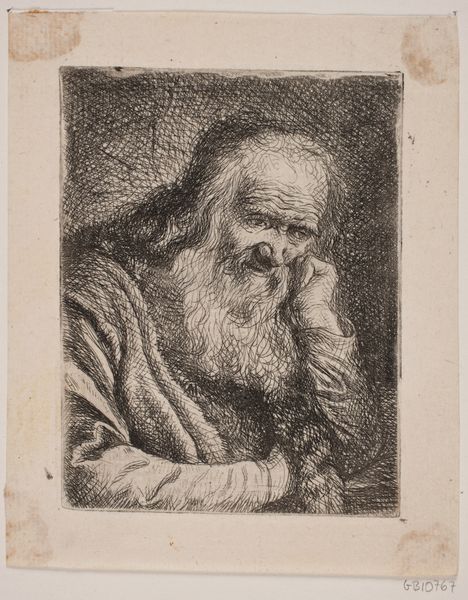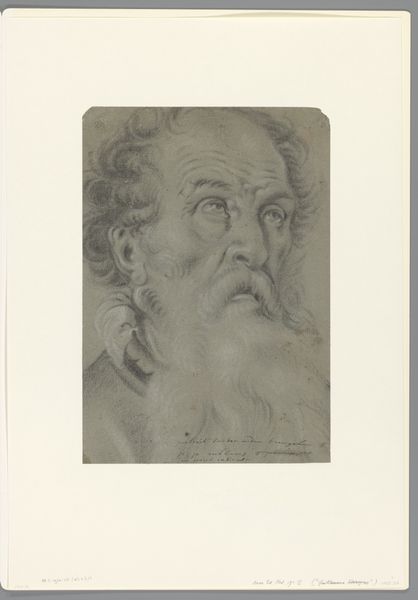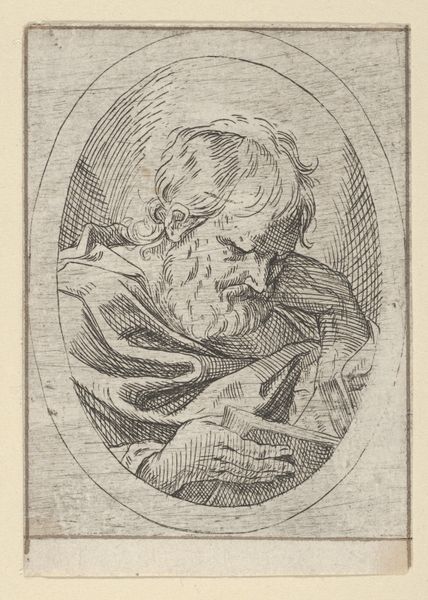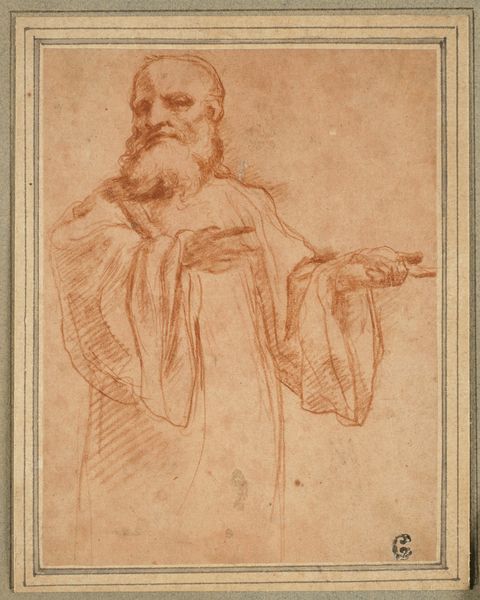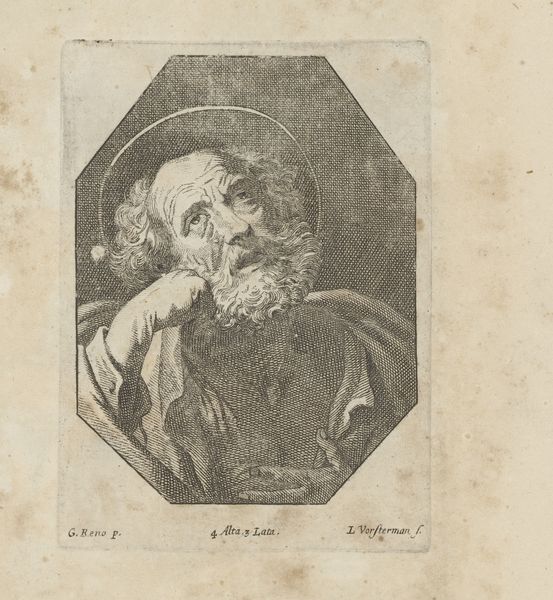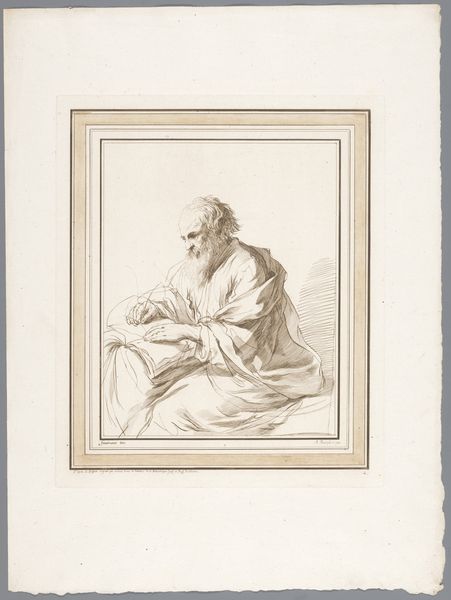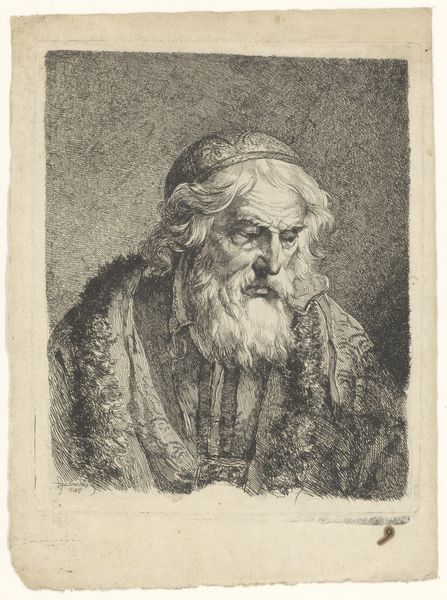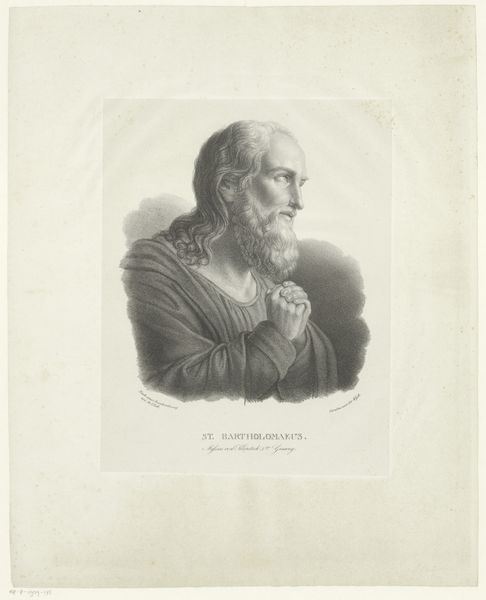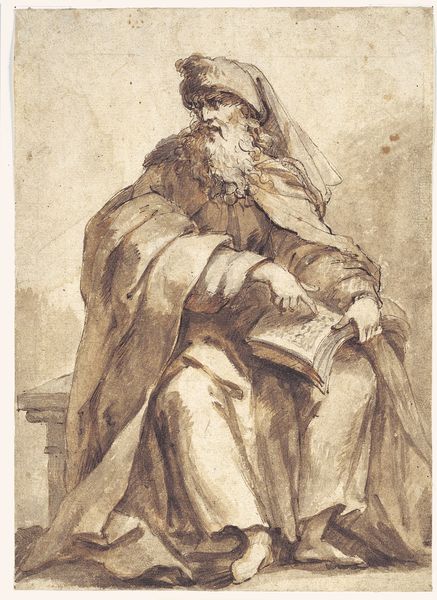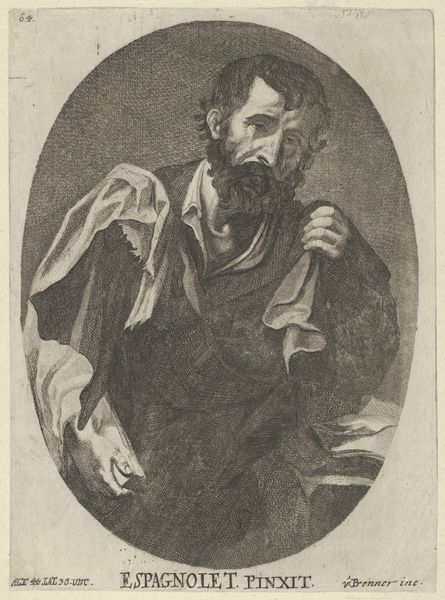
Der Heilige Petrus, die linke Hand auf einem Buche und den Schlüssel haltend, die rechte auf der Brust
0:00
0:00
drawing, chalk
#
pencil drawn
#
drawing
#
netherlandish
#
aged paper
#
toned paper
#
baroque
#
pencil sketch
#
old engraving style
#
charcoal drawing
#
pencil drawing
#
coffee painting
#
chalk
#
14_17th-century
#
watercolour illustration
#
watercolor
Copyright: Public Domain
Editor: Here we have Cornelis Visscher’s "Saint Peter, left hand on a book holding the keys, the right on his chest." The aged paper gives it a sort of… serious, scholarly feel. What stands out to you about it? Curator: Well, beyond its artistic merits, consider its function. Visscher wasn't simply depicting a saint; he was producing a visual statement. In the 17th century, imagery was crucial in shaping public perception, particularly around religious figures. Do you notice anything specific about the portrayal of Saint Peter? Editor: He seems quite contemplative, even gentle. I thought depictions of saints were usually more… forceful? Curator: Exactly. The gentle portrayal humanizes Peter, moving away from an image of strict authority. Think about the Reformation and its impact. Could this depiction be subtly engaging with Protestant critiques of the Catholic Church’s emphasis on saints as intermediaries? How might the Keys symbolize earthly versus spiritual power in this context? Editor: So, the artist might be suggesting a more personal, less hierarchical relationship with religion? Curator: Precisely. It also speaks to the changing patronage of the arts. Perhaps Visscher was aiming for a different audience than the Church, appealing to a growing merchant class with a more intellectual understanding of faith. Editor: I never considered how the Reformation would affect art commissions. Now I'm wondering what his patrons expected him to convey. Curator: It's this intersection of artistic skill, social context, and political undertones that makes art history so fascinating. The museum functions to facilitate and sometimes obscure this function. What does thinking about all this make you wonder? Editor: It makes me appreciate the artist’s clever way of subtly embedding his opinion into what seems like a simple portrait. It’s been so interesting digging beneath the surface today!
Comments
No comments
Be the first to comment and join the conversation on the ultimate creative platform.
